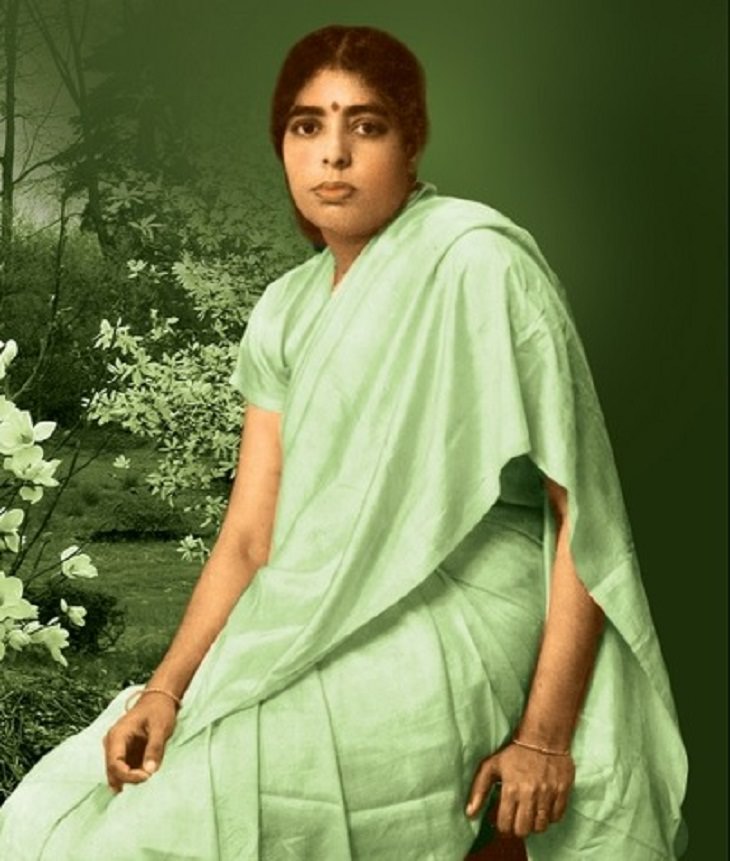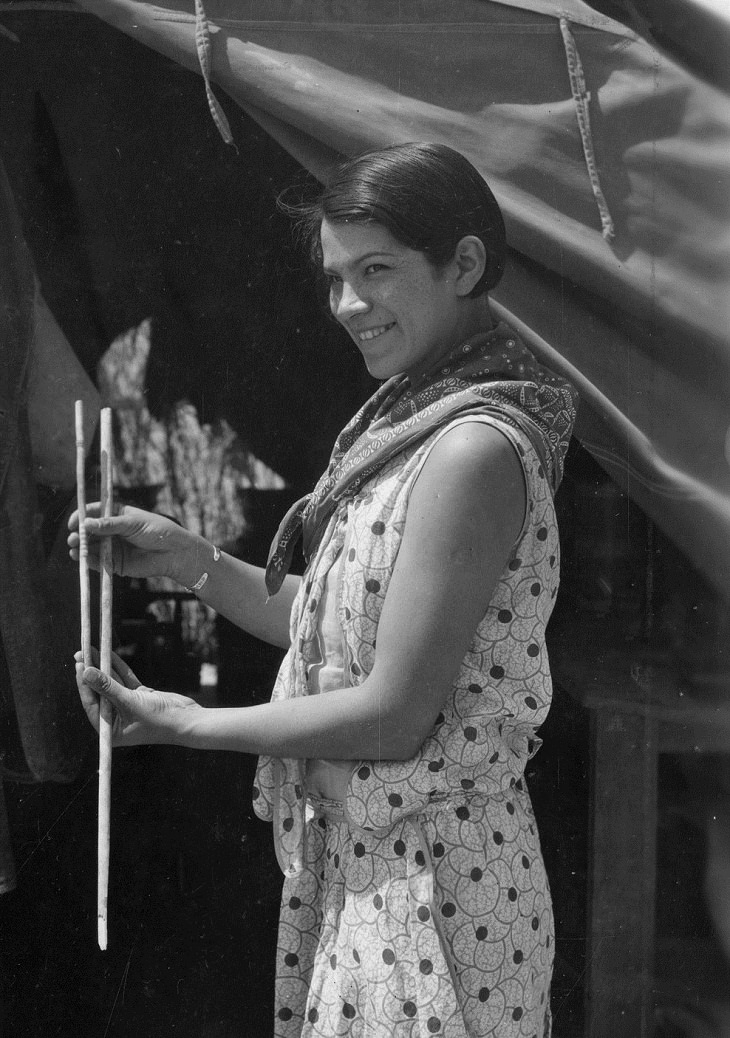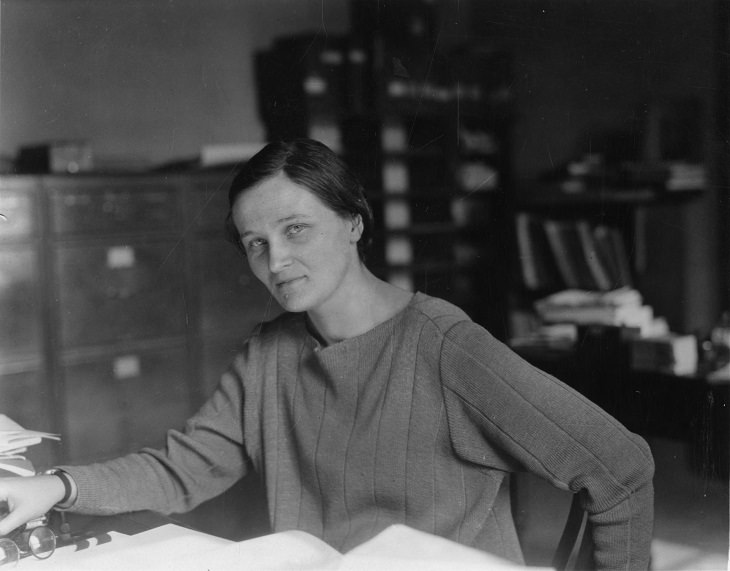Marie Curie’s name needs to introduction. Apart from discovering two elements—radium and polonium – she is also credited for coining the word radioactivity. After the discovery of radioactivity in 1896, Curie developed techniques for isolating radioactive isotopes. She also invented a mobile X-ray unit that was used during World War I.
In 1903, Curie became the first woman to win a Nobel Prize for her work on the “radiation phenomenon”. In 1911, she was given a Nobel Prize in Chemistry for her work in isolating radium, thus becoming the only scientist to win the prestigious award in two scientific fields.
Curie’s work on X-rays and uranium helped create a new field of study, atomic physics. She died in 1934 due to prolonged exposure to high-energy radiation during her research.
2. Janaki Ammal, Botanist (1897-1984)
Janaki Ammal was India’s first female plant scientist. The talented botanist developed several hybrid crop species that are still grown today such as eggplant and sweet sugarcane. The invention helped India grow sweet sugarcane on its own land instead of importing it from other countries. She is also known for her exhaustive study of chromosomes of thousands of species of flowering plants. The study is well documented in the book The Chromosome Atlas of Cultivated Plants, which she co-authored with biologist CD Darlington.
There is even a flower named after the botanist - a delicate bloom in pure white called Magnolia Kobus Janaki Ammal.
3. Chien-Shiung Wu, Physicist (1912–1997)
Often called the "First Lady of Physics" and the "Chinese Madame Curie", Chien-Shiung Wu was a Chinese-born American experimental physicist who left her mark in the field of beta decay. Born on May 31, 1912, in Liu He, a small town near Shanghai, China, Wu came to the United States in 1936 and did her Ph.D. at the University of Michigan. Wu, however, is best known for “The Wu experiment”. This 1956 particle and nuclear physics experiment proved that identical nuclear particles do not always act alike. Curiously, this work earned her two colleagues, Tsung-Dao Lee and Chen Ning Yang, who had proposed the experiment, the 1957 Nobel Prize in Physics. Wu was acknowledged for her work only in 1978 when she was awarded the Wolf Prize in Physics.
4. Caroline Herschel, Astronomer (1750-1848)
Caroline Herschel is the first woman credited with discovering a comet. She is also the first woman to receive a salary for her scientific work and the first female to receive an honorary membership with Britain’s Royal Society.
In the 1780s, Herschel, along with her brother, William, studied the night sky. The brother-sister duo recorded 2,500 nebulae and star clusters. Incredibly, Herschel alone discovered 14 nebulae and eight comets. She sent her findings to the Astronomer Royal and in 1787 King George III offered her a salary for her research in astronomy. Herschel eventually went on to record over 500 more stars in her career.
Herschel died in 1848 at the age of 97. Her tombstone contains an inscription in her own words: "The eyes of her who is glorified here below turned to the starry heavens."
5. Alice Ball, Chemist (1892–1916)
Alice Ball pioneered the treatment for leprosy in the early 20th century while in her early 20s. After earning her graduate degrees from the University of Washington and the University of Hawaii, Ball became the first woman to get a master's degree at the University of Hawaii. There, she researched treatments for leprosy and went on to develop the first injectable leprosy treatment made from the oil of the chaulmoogra tree. The treatment, called the “Ball Method”, was the most effective one available in the early 20th century and was used to treat thousands of leprosy patients.
Unfortunately, Ball’s genius was cut short as she died at the age of just 24 after being exposed to chlorine gas in a lab accident. Her legacy, however, will never be forgotten.
6. Katherine Johnson, Mathematician (1918-2020)
Katherine Johnson was a mathematician at NASA and was involved in their early space missions. Fondly known as a “human computer”, she helped calculate and analyze the flight paths of many spacecraft, including Apollo 11, which helped it to successfully land on the Moon and make its way back to Earth. Johnson could perform and solve difficult math problems with ease and her calculations were instrumental in successfully sending several astronauts into orbit.
Katherine died in 2020 at the age of 101. Her work was celebrated in the 2016 film Hidden Figures, in which she was portrayed by Taraji P. Henson.
7. Rosalind Franklin, Chemist (1920-1958)
While James Watson and Francis Crick are credited for determining the structure of DNA, their discovery wouldn’t have been successful if they didn’t have the work of Rosalind Franklin to rely on. The English chemist held a Ph.D. in physical chemistry from Cambridge University and worked on X-ray diffraction images of DNA. Franklin successfully photographed the structure of DNA on a machine. This led to the correct identification of its double helix structure. The chemist also found that when exposed to high levels of moisture, a DNA’s structure changes.
Unfortunately, Franklin passed away in 1958 at the age of 37 from several illnesses. In 1962, Watson and Francis, who had used Franklin's work to publish a revolutionary 1953 article, were awarded the Nobel Prize for solving the structure of DNA. In his 1968 book, The Double Helix, Watson wrote that he would never have won a Nobel Prize if it wasn’t for Rosalind Franklin.
8. Bertha Parker Pallan Cody, Archaeologist (1907- 1978)
Bertha Parker Pallan Cody is widely regarded as one of the first female Native American archeologists. Born on August 30th, 1907, in Chautauqua County, New York, Bertha moved to Nevada as a young adult and displayed an avid interest in scientific research after she began assisting her uncle in archeological excavations. Immersing herself in her archeological studies, Bertha soon began publishing several research articles.
In 1929, she discovered an archeological site in Pueblo, which she named "Scorpion Hill." Soon after, Bertha found another site called Corn Creek, Nevada, where she found fossilized camel bones in an eroded lake. She is also credited for discovering a skull of a rare and extinct species of giant sloths called the Nothrotherium Shastense. This wasn’t all. She found ancient human tools near the skull fossil, which provided evidence of early human occupation in North America.
9. Cecilia Payne-Gaposchkin, Astrophysicist (1900–1979)
Today, we know that stars are mostly made of hydrogen and helium. But the person who first discovered this was Cecilia Payne-Gaposchkin. Born in Wendover, England, on May 10, 1900, Cecilia was interested in science from a young age. Back then, there were no prospects for an astronomy job in England. She thus moved to the United States after her graduation and in 1925, she became the first person to earn a Ph.D. in astronomy from Radcliffe College.
Cecilia soon started researching what stars are made of. She was surprised to find that all stars had similar compositions and were composed of hydrogen and helium. In 1925, she printed her thesis as a book called Stellar Atmospheres. However, her findings were rejected by the scientific community. Years later, her findings were proved correct through observation.
Cecilia eventually became the first woman to be a full professor at Harvard the first woman to receive the American Astronomical Society’s “lifetime of eminence” award. Her analysis of the composition of stars changed the way we understand the universe.
Share this post with friends and family...









